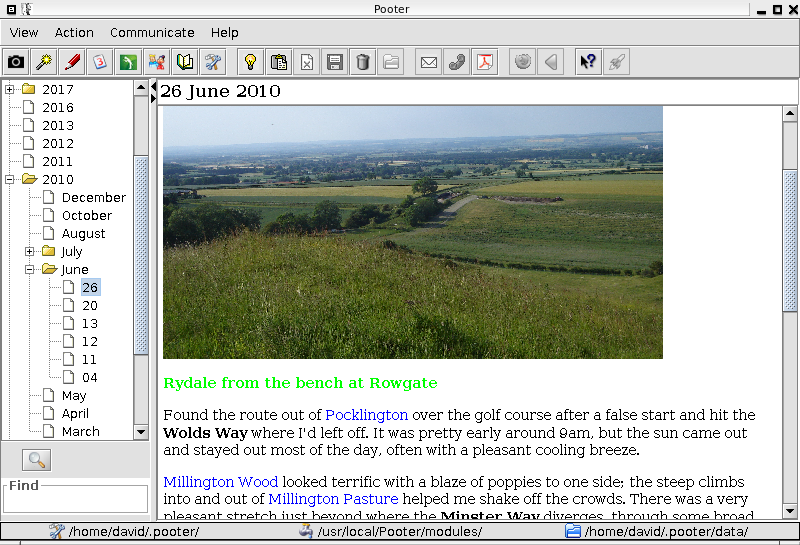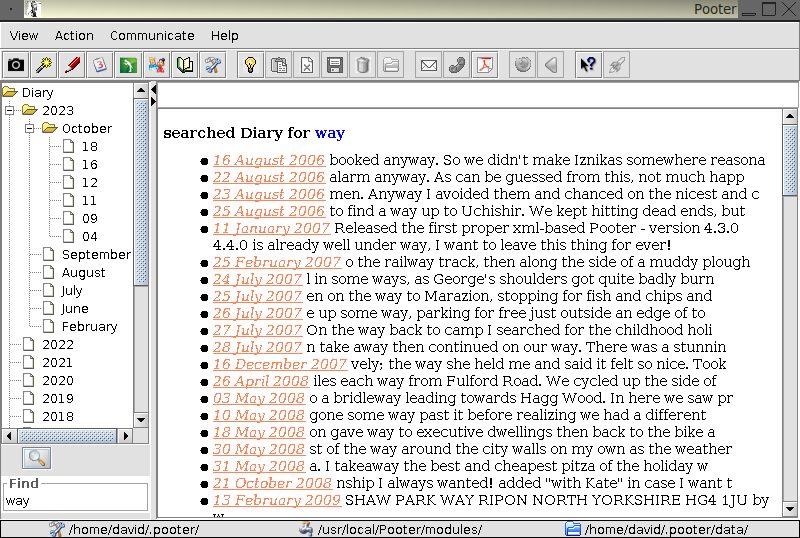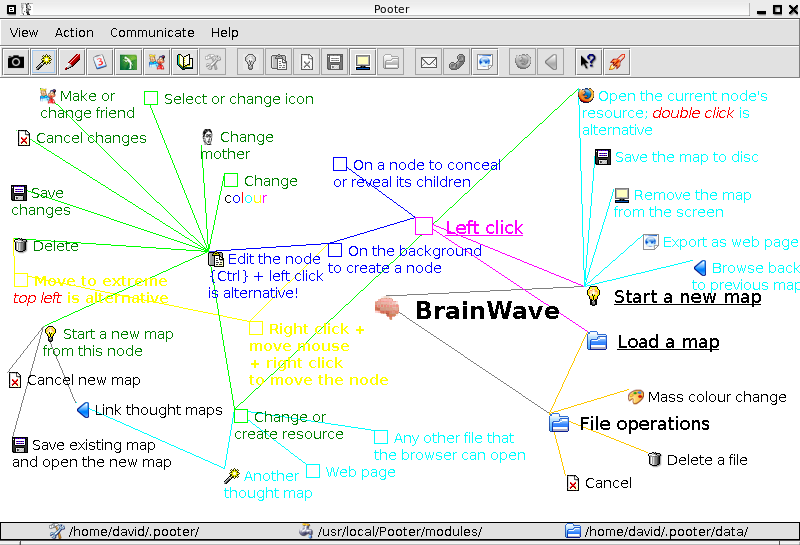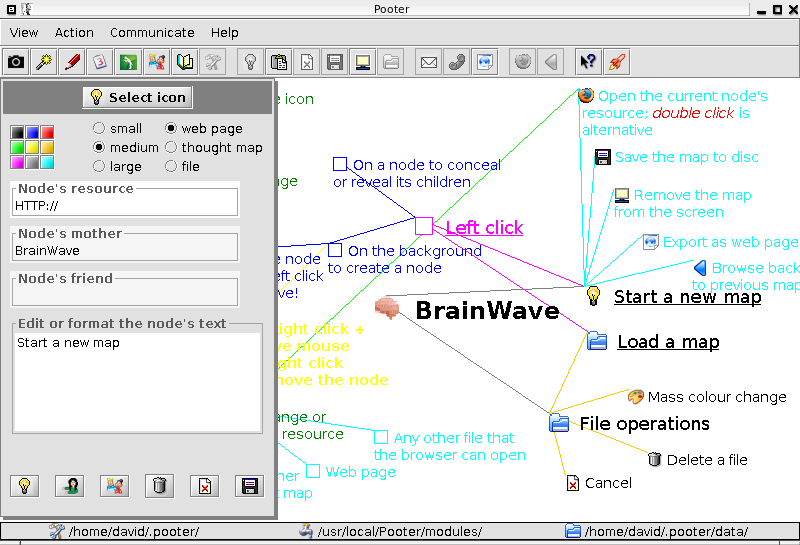This provides a brief intro into what the six supplied modules can do. There are more detailed manuals supplied with the download, available both inline with the running application and is a doc directory. The screenshots were taken on a machine running the devuan flavour of Linux, but Pooter looks pretty much the same if you run it on Windows 10.
 Calendar
Calendar

Keep track of appointments by storing brief notes for the day concerned. Also record recurring annual events. Search facility included, useful if you know you recorded John's birthday, but can't remember when it is!.
 Contacts
Contacts

Store a list of contacts and their address/phone/email details; divide them up into groups if you wish. Link the module with 3rd party programs to write letters and send email.
 Diary
Diary

Record your daily thoughts and adventures, storing them in a database.You can export selected entries. such as each day of a holiday to a pdf file. Each entry can include a single image; note that the image is not stored in the database, rather it's file path only.

The search facility will enable you to quickly find the day, whose magical events you already recorded. The results of the search now include links to the individual entries so it's convenient to browse through multiple results one at a time.
 Notes
Notes

This is for the recording of brief bits of info of any kind; it can include links to web pages. It can also be used to link up with the Calendar, Contacts and ThoughtMap modules, if they are also installed.
 PhotoAlbum
PhotoAlbum
The default setting for this module leaves thumbnail images to be created on the fly; it really isn't very satisfactory, but does allow things to be tried out straight away. There is a utility provided to create the scaled images ahead of time and store them on disc. Once that's been done you can alter settings in the Preference tab and the module will then work much better,

The Files tab gives a directory view of your photos and all the images in each sub folder. The Categories tab allows you to group photos without reference to their position in the file system.

As well as adding photos to one or more category, you can also write a brief note about them. As with the Diart module, a database is used to record this additioal information. Photos should be in a permanent position on the file system before you categorize and record notes.

The added notes will then appear in the Info tab, together with any exif data contained in the image file.
 ThoughtMap
ThoughtMap

An illustration may sometimes be better than a written note. In a ThoughtMap you can link related ideas together in various ways such as in mother/child and friend/friend relationships

This module is not difficult to use, but it's probably rather different to anything else you've worked with so it's strongly recommended that you work through the tutorial rather than trying to just hack it!.